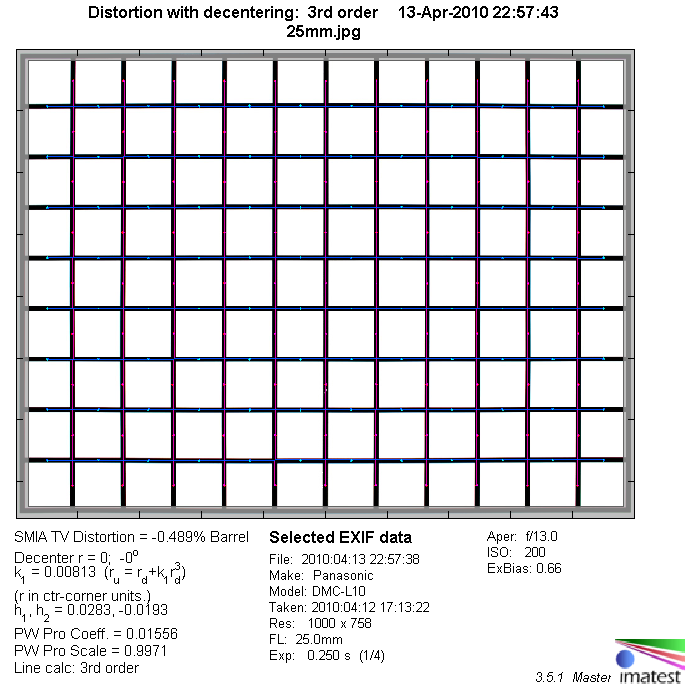|
Leica D Summilux 25mm f/1.4 - Review / Test Report - Analysis |
|
Lens Reviews -
(Micro-)Four-Thirds
|
|
Page 2 of 3

Distortion
Prime lenses aren't overly prone to distortion and that's also true for the Leica Summilux. It shows a slight amount (0.5%) of barrel distortion which is generally not visible in field conditions.

Vignetting
The Leica produces a fairly pronounced degree (1.1EV) of vignetting at 25mm @ f/1.4 which is slightly disappointing regarding the large size of the lens but understandable with respect to the ultra-large max. aperture. The vignetting "curve" is a little odd - the amount of vignetting decreases gradually the more you stop down (we double-checked this). The normal behavior is "steeper" here. The issue is still significant at f/2 and also at f/2.8 and you need to stop down to about f/5.6 till it's not really field relevant anymore.

MTF (resolution)
The Summilux has a highly unusual resolution characteristic. It seems to be "Noct-like" (the Noct-Nikkor 58mm f/1.2 is a legend here) which means that it is exceedingly sharp at large apertures but it doesn't really get much better when stopping down.
In fact the lens broke the old resolution record of our previous 4/3 tests and that's by QUITE a margin ... at f/2!
The center is crystal clear at f/1.4 and the contrast level is exceptionally high here already.
The border performance is pretty good but not quite par with the center. Stopping down to f/2-f/4 lifts
the center to stunning levels whereas the border/corner quality remains pretty much constant.
Diffraction effects dampen the curve from f/5.6 onwards but the lens is still easily usable at f/8.
There's a slight amount of field curvature but it's not really field relevant except maybe at max. aperture.
Some keen users may note that the LW/PH figures exceed the resolution of the sensor and as such Nyquist - see this document (bottom) for more details about the procedure if you'd like to dive into this. Imatest can look a bit beyond the sensor resolution by taking some further parameters into account
Please note that the MTF results are not directly comparable across the different systems!
Below is a simplified summary of the formal findings. The chart shows line widths per picture height (LW/PH) which can be taken as a measure for sharpness.
If you want to know more about the MTF50 figures you may check out the corresponding Imatest Explanations
Chromatic Aberrations (CAs)
Lateral CAs (color shadows at harsh contrast transitions) are a weakness of the Leica lens. They're not overly pronounced at large apertures but fairly easily visible from ~f/2.8 onwards. The CAs reduce the subjective sharpness impression but it is, of course, possible to reduce the impact substantially via image post-processing in tools such as Photoshop and the likes.

|